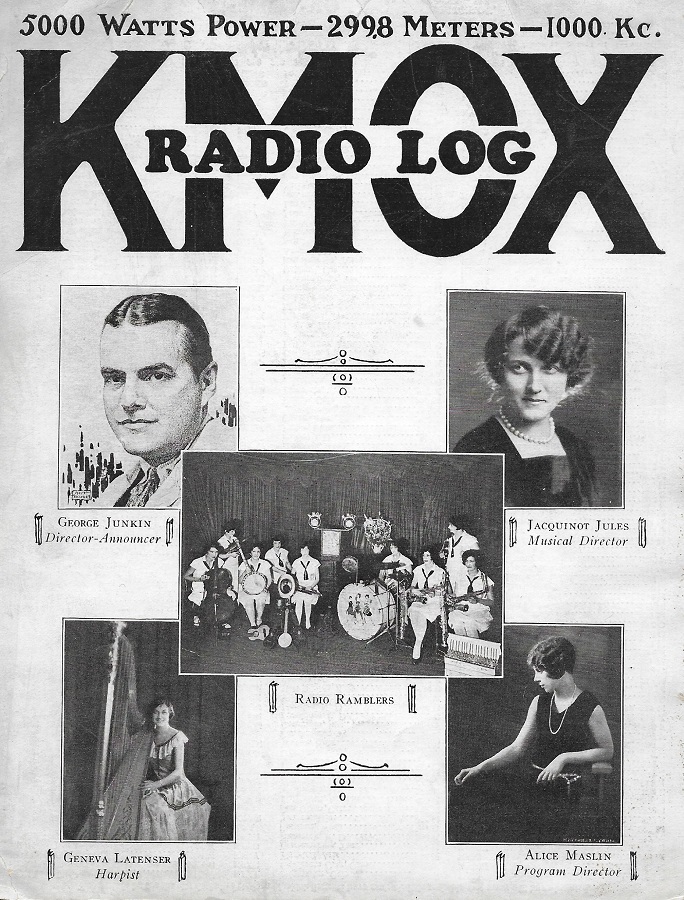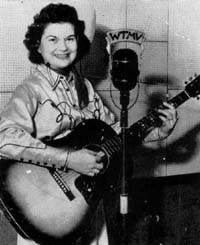Radio Articles
KMOX Rewarded Its Initial Investors
When a group of local businessmen got together to build St. Louis’ “superstation” in 1925, their agreement included a chance for some corporate self-promotion.
That superstation went on the air December 24, 1925 with the call letters KMOX, but this wasn’t the set of call letters the organizers had wanted. Their group was called “The Voice of St. Louis, Incorporated,” so they sought KVSL. This request was turned down by the federal government. The group responded with a second request, this for KMO. The government had already assigned those letters to a West Coast maritime station. Finally, on the third attempt, the local group got what they sought, and KMOX was assigned to St. Louis in early December.
This group of men realized the promotional power of radio in that era. There were already several stations operating in St. Louis: KSD, KFUO, WEW, WSBF, WIL, KFQA, WMAY, KFVE and KFWF. Of these, WEW was owned by St. Louis University, KFWF by the St. Louis Truth Center, KFUO by the Lutheran Church, WMAY by the Kingshighway Presbyterian Church and KFQA by The Principia, all of which were non-profit institutions. Although some people felt the use of the public radio waves for advertising was not appropriate, many stations had been doing it since 1922 when WEAF in New York set the precedent.
So the new radio station, KMOX, would have the power to reach large audiences throughout the Midwest during the day and across the nation at night. While the investors were portrayed as civic-minded folks who wanted to put St. Louis on the map with the new station, a second motivation became obvious early in 1926. It was then that the regular program schedule of KMOX was announced.
Beginning January 4, entire program blocks were allocated to the companies that had invested in the Voice of St. Louis. The Merchants Exchange provided live reports throughout the broadcast day, with live coverage of the closing. The St. Louis Globe-Democrat provided news updates from the Associated Press. Brown Shoe Company had a program for children Monday and Friday nights at 7:00, featuring Buster Brown and his dog Tige. This was followed by F.C. Taylor Fur Company’s program of “interesting features.”
A Globe-Democrat article also told of an afternoon show “of particular interest to women” presented by the C.F. Blanke Tea and Coffee and Candy companies. “There will be short talks on problems peculiar to the housewife and the care of the household. These talks will be interspersed with musical numbers.”
Another investing corporation, Stark Brothers Nurseries and Orchards, tried to apply a weekly program revolving around a schoolhouse theme to their business. “The schoolmaster will discuss with his ‘class’ problems that relate to the planting of fruit trees, the planting of gardens, the care of the lawn and landscaping of yards and estates. Messages from Luther Burbank and other nationally known figures will be incorporated into the work of the ‘school.’ Many interesting romances of the fruit world will be discussed.”
The concept of sponsored hours proved successful. A year later, program listings indicated many of the same shows were still running. The early investors in KMOX really got their money’s worth, with their advertising messages broadcast to the masses.
(Reprinted with permission of the St. Louis Journalism Review. Originally published 12/00)

 her listeners could come up with one she didn’t know. A gifted musician on piano, harmonica, mandolin, Gibson guitar, banjo and bass, Susie kept the listeners of WTMV entertained for six years.
her listeners could come up with one she didn’t know. A gifted musician on piano, harmonica, mandolin, Gibson guitar, banjo and bass, Susie kept the listeners of WTMV entertained for six years.